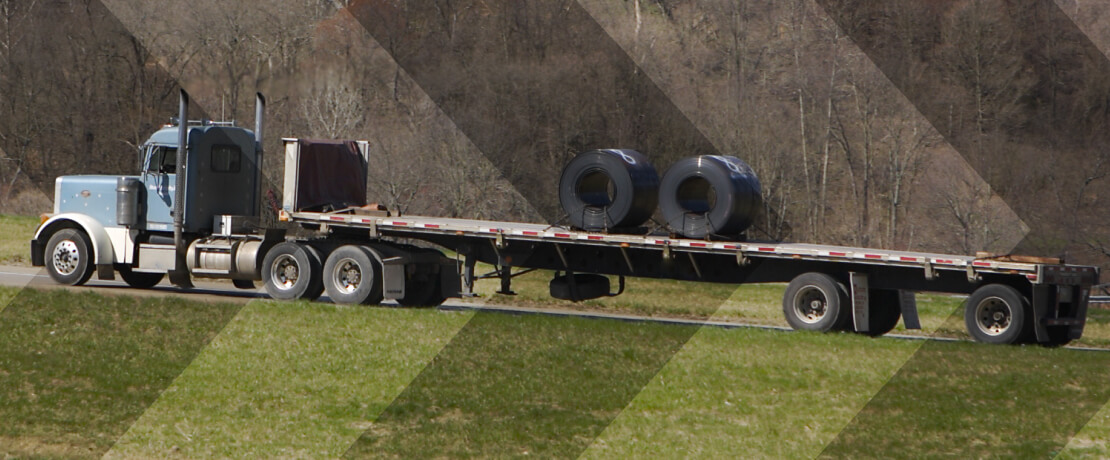LTL Freight Shipping: What It Is & Tips for Shippers

Ship your freight faster.
Move your freight right now. Thousands of trustworthy trucking partners are waiting.
Not every shipper has enough goods to fill up an entire trailer. That’s where less than truckload (LTL) freight comes in.
LTL freight, or freight that fills less than a full truckload, can benefit both shippers and carriers. Shippers pay for the space they use and share costs for transportation with other shippers. Carriers maximize their profits by carrying full loads from different shippers as often as possible.
What is LTL freight?
When shippers don’t need an entire trailer to move their cargo, they can choose less than truckload freight shipping. It’s typically the most affordable way to transport oads that are too large or heavy for parcel carriers but too small to fill a full-size trailer.
Less than truckload freight is usually the preferred method for loads between 150 and 15,000 pounds.
How does LTL freight shipping work?
LTL freight shipping works by consolidating partial loads from multiple shippers to create full truckloads. This usually (but not always) creates multi-stop truckloads. Pricing is based on space and weight, classification of the goods being shipped, and pickup and delivery destinations.
Less than truckload freight shipping can include standard, expedited, or date-guaranteed shipments.
What is the difference between LTL and FTL?
One of the biggest differences between LTL and full truckload (FTL) freight shipping is price. Shippers pay lower rates for shipping LTL loads because they’re only paying for the portion of the trailer they’re using. But because LTL freight is sharing space with other shipments that might require multiple delivery destinations, it’s harder for shippers to predict delivery times accurately.
With full truckload freight shipping, goods are loaded up, and the trailer is sealed. The truck goes directly from pickup to delivery. With LTL shipping, you’ll often see product loaded/unloaded in and out of trailers and warehouses multiple times before being delivered. Any time goods change hands frequently, there is the added risk of damage.
The benefits of LTL freight shipping
LTL freight shipping offers multiple upsides for both LTL carriers and shippers.
Reduced shipping costs
Compared to the cost of a full truckload, LTL freight shipping costs shippers less since they’re only paying for the space they use. It also makes LTL shipping more affordable for smaller businesses as costs are shared across multiple shippers.
Increased security
Most LTL freight shipments are bundled onto pallets that are wrapped and packaged before loading. That means that even when cargo moves between carriers and warehouses, it should be secure throughout the journey.
Improved tracking
LTL carriers offer full tracking capabilities and options, such as:
- Bill of lading
- PRO number
- PO number
- Shipment reference number
- Pickup date range
Customer satisfaction
Shippers can use LTL shipping for personalized white glove delivery, which is a great way to improve the customer experience and encourage repeat purchases. For example, customers ordering a major kitchen appliance or a sectional sofa probably don’t want their items left on their doorstep. Shippers can instead offer in-home delivery and optional setup for an additional fee.
While the carrier gets the fee for the additional service, the shipper enjoys the benefit of happy customers.
What factors should determine your LTL freight rates?

Several factors impact how carriers and brokers price LTL freight rates. Take these things into account when looking at LTL rates:
Market demand.
High demand can increase LTL freight rates, based on low space availability on trailers.
Fuel costs.
Fuel costs tend to vary significantly based on market volatility and location.
Distance.
the more miles between point of origin and delivery destination, the greater the cost for everyone. LTL shipping along established lanes to major hubs will cost less than multiple rural or residential deliveries.
Deadhead miles.
Carriers may bill for their drive time between pickups, so they don’t have to bear the cost of empty miles.
Accessorials.
Special services cost extra. Carriers can charge higher shipping fees for services like:
- Liftgate pickup or delivery
- Inside pickup or delivery
- Residential pickup or delivery
- Reweighing
- Reclassification
- White glove service
LTL freight class.
An LTL freight class is a designation created by the National Motor Freight Traffic Association (NMFTA) to standardize freight classes. Shipments are categorized based on four factors:
Density. The amount of space an item takes up relative to its weight, Density usually plays the biggest role in determining prices. Bulkier but lighter LTL shipments have a low density, which costs more to ship because carriers have less space to take on other shippers.
Stowability. How easy (or difficult) goods are to store within the trailer. For example, extra heavy, oversized, or hazardous goods can be more difficult to stow, and therefore costlier to ship. But if your freight fits on a standard shrink-wrapped 4×4 pallet, your LTL freight rates will be at the lower end.
Handling. Difficult or special handling needs also play a role in determining weight class. Hazardous goods, for example, must be handled differently.
Liability. Fragile or perishable goods, such as produce, may require additional measures for damage protection, such as refrigerated trailers. Carrying unstable or fragile items can increase a carrier’s liability if something goes wrong.
Keep in mind that carriers may be willing to negotiate their rates for LTL freight, so it never hurts to ask!
Tips for finding LTL freight carriers
In today’s fast-paced world, decisions often have to be made quickly. The key is better data and understanding rate trends to find the best carriers.
Use a dedicated LTL load board.

Using less than truckload load boards such as Truckstop, shippers can find owner operators and their accurate, same-day rate data. A load board also provides rate recommendations specific to load, broker, and lane. A good LTL load board will track rate trends, accurately assess supply chain variables and demand for both origin and destinations, and help predict fuel rates and surcharges.
Work with an LTL freight broker.
LTL freight brokers use load boards and their relationships to connect carriers with the ideal loads. LTL freight brokers match goods with carriers based on capacity, lanes, and routes to make those shipments on time. Brokers also help carriers find LTL loads that optimize trailer loading.
Use a transportation management system.
A robust transportation management system (TMS) can make life easier for LTL freight carriers in a variety of ways, including:
- Optimizing assets (driver, tractors, trailers)
- Balancing loads across resources
- Ensuring compliance with federal regulations
- Providing proof of delivery visibility
- Automating IFTA reporting

Carriers can save time by quickly creating bills of lading (BOLs), managing customer agreements electronically, providing load confirmations, and creating invoices with one click. The best TMS helps carriers optimize shipments and routes. They also help make sure you’re charging profitable and competitive rates. The vast majority of carriers are still relying on spreadsheets and manual processing of LTL freight shipments. Using software and automation can significantly improve your speed and accuracy. Customers save time and money using Truckstop’s ITS Dispatch tool. The average user sees 31% more loads and 12% higher profits.
Get the best rates on freight loads.
Fill your trailer and find LTL freight rates on the Truckstop Less Than Truckload Load Board. We can help you find LTL freight loads, give you the tools to book them fast and boost your revenue.
Frequently Asked Questions
Listen up!
Check out our podcast, Freight Nation, where industry experts talk all things trucking.

Find out how our platform gives you the visibility you need to get more done.
Get helpful content delivered to your inbox.
Schedule a demo.
Find out how our platform gives you the visibility you need to get more done.





